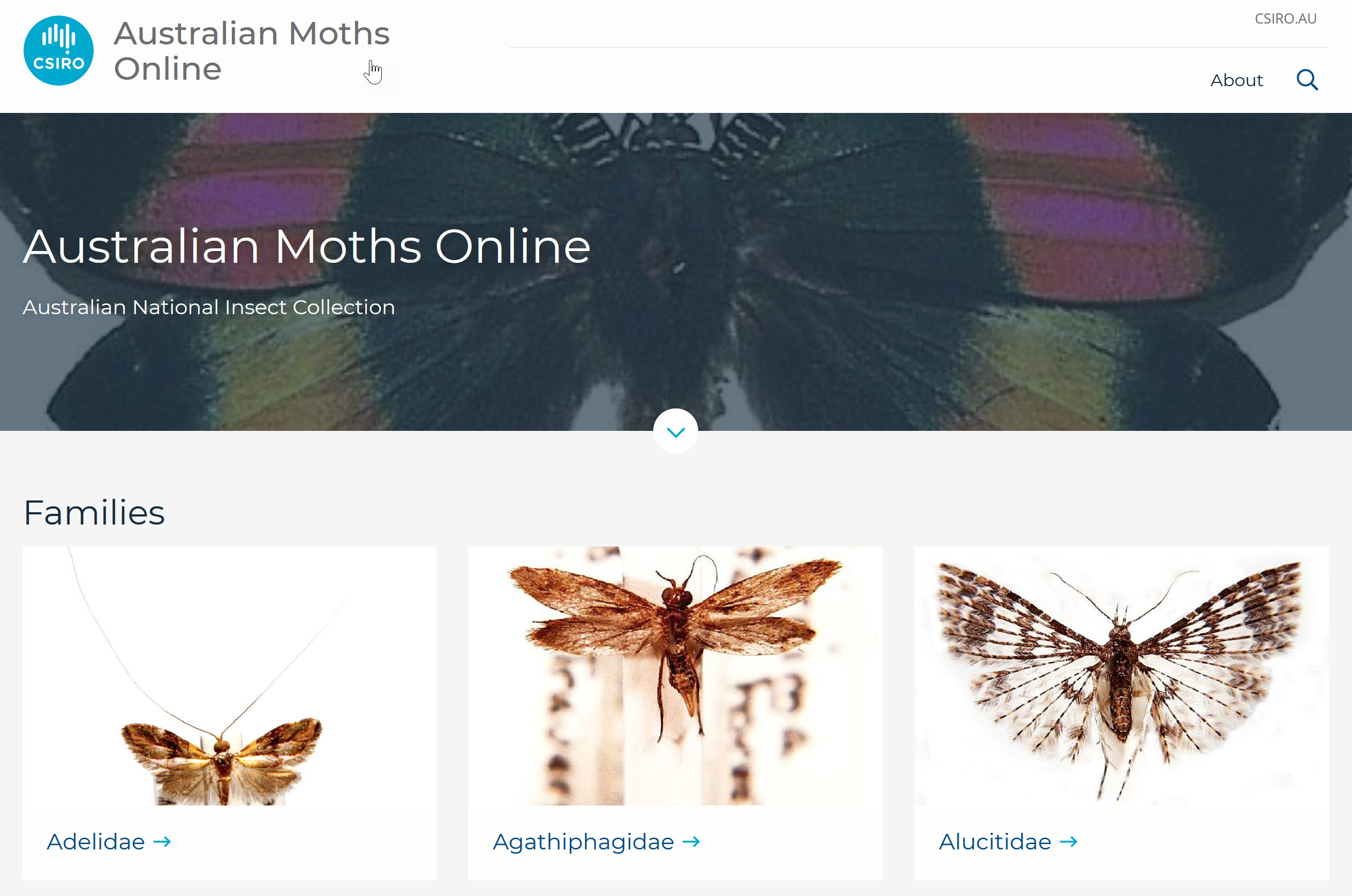 Australian Moths Online
Australian Moths Online
CSIRO
online website
yes
by family, search box

Link: Australian Moths Online
The Australian Moths Online website by CSIRO is a database of excellent images of Australian moths from the Australian National Insect Collection. It is an amazing database that shows some of CSIRO’s hidden collection treasures. It is easy to use and suitable for interested naturalists as well as scientists.
The organisation of images is through family and subfamily albums. Image captions show the scientific species name, the genus name, the name of the author who described the species (and publication year). There is also information of the specimen sex, locality, date, collector and collection.
Australia has around 22 000 species of moths. Around half of these have scientific names. Australian Moths Online does not include images of all described species and deliberately excludes species that have not been described.
Link: Australian Moths Online website
To identify families, use: Key to families of moths and butterflies (Lepidoptera)
Other moths and butterflies resources
- Australian Caterpillars and their Butterflies and Moths website
- The Complete Field Guide to Butterflies of Australia

